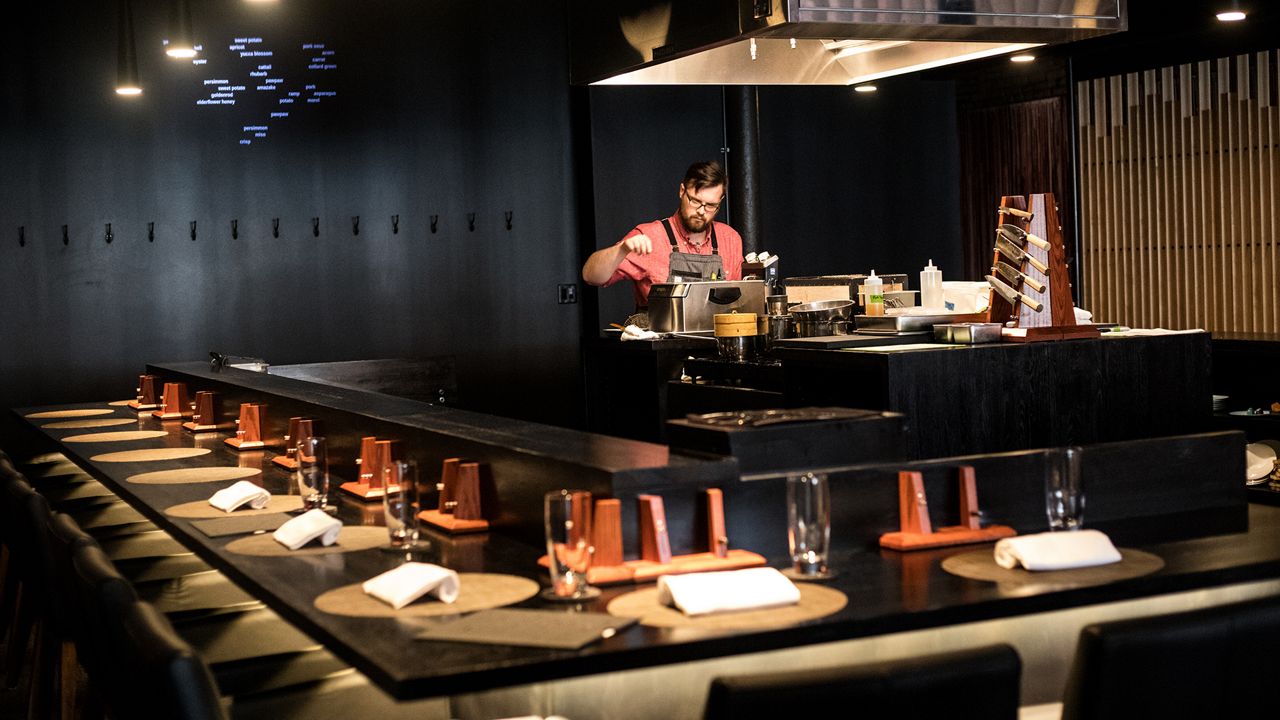ST. LOUIS — By bringing historical research and local ingredients to the forefront, one chef is giving St. Louisans a taste of the Ozarks in a contemporary style.
Rob Connoley is the owner and head chef of Bulrush that opened in 2019. He was recently listed as a semifinalist for the prestigious James Beard Award for the third time. Perhaps three times will be the charm as his Ozark-themed restaurant is unique in which no one else is exploring that culture and cuisine.
Connoley originally had explored food from his childhood, commonly done among chefs, which for him was based in Bridgeton in the 1970s and 1980s. However, “that’s not very exciting,” he said.

Going back further in the family tree, Connoley’s lineage dates to Ste. Genevieve in the 1830s. While he did not think German food was a good fit for his restaurant, Connoley said he noticed a distinct region in Missouri that had been overlooked.
“When we first opened, we were focusing on the Ozarks because we knew no one had really done that before,” he said. “No one in the Ozarks had done Ozark food. They’ve done food in the Ozarks, but not Ozark food. Part of that is, what is Ozark foods?”
When Connoley told people about his Ozark cuisine idea, he said the responses were dismissive and condescending.
“I realized that the region had 100-150 years of stigma placed on it,” he said. “I was aware that people were just not able to see it had its own identity, its own culture that was worth exploring and celebrating.”
To celebrate and honor Ozark culture, Connoley formed his business into what he calls “reparative restauranting.” On his website, he defines the term as a “business model that centers (on) those who have been harmed in the past, making amends for past harms, stopping present harm, and preventing the continuation of harm in the restaurant industry. To this end, Bulrush uses staff-driven history research to ensure all cultures and communities of the past are acknowledged, honored and supported through our work.”
To understand what Ozark cuisine is, one must look at the evolution of food in that region starting in the late 18th and 19th centuries. Connoley said indigenous people, primarily Osage and Cherokee, as well as settlers who brought enslaved individuals contributed to what people eat today.
He wants to share those stories behind his food with his customers, but “not doing a clean version of the story because that’s what you often get, but the messy version and help people understand how we got here,” Connoley said.
In doing so, he has looked at inventories obtained through archives from old businesses in the Ozarks during the 18th and 19th centuries and started to bring back crops from the mid-19th century that have not grown in Missouri in more than 100 years.
Additionally, Connoley has been working on a genealogy project for descendants of freed and enslaved individuals from Farmington, Missouri.
“It’s stuff like that that doesn’t make sense in a restaurant, but we do it because it helps us understand what Ozark food is and that then ultimately evolves into where we are today,” he said.

The mission of the restaurant does not stop there. There are many aspects to his reparative business that centers around who is hired, how staff is compensated, where ingredients are from, where charitable donations are made, and more, according to Connoley.
He mentioned that every ingredient and component of a dish are justifiable based on research, history, and stories behind it. He added that he loves to cook food that is part of history, but not commonly thought of such as Walleye. Unless one is a fisherman, he said most are not aware that Walleye fish exist in the Ozarks.
The restaurant offers seven courses and customers can expect a new menu every few weeks to match what new ingredients farmers bring in or what Connoley forages himself.
“It’s just so much fun being able to be playful with food,” Connoley said. “We’re not bound or tied by the conventions of how to run a restaurant the way it’s always been run. We’re just going to do what we want to do, and I know it’s going to be good because my team is great.”
His favorite aspect of Bulrush is seeing people become engaged with history that they had not considered before.
“I see and feel the enthusiasm every single night,” Connoley said.
For more information about Bulrush, click here.



